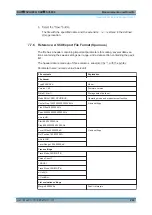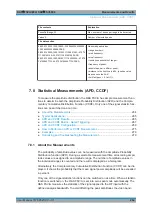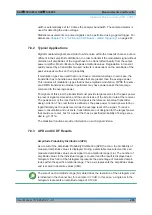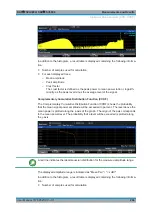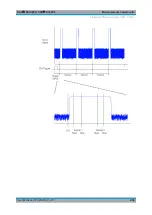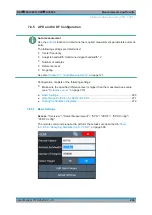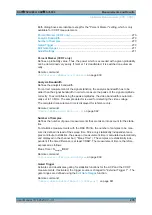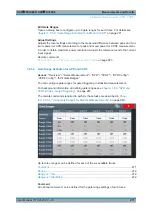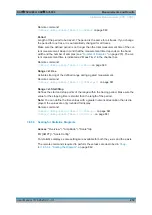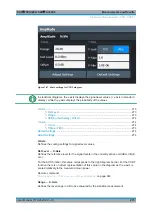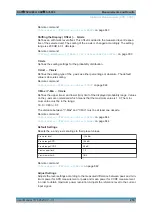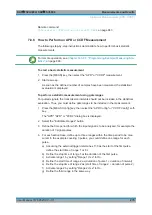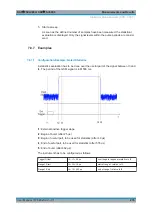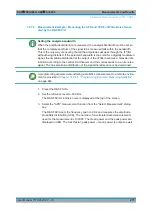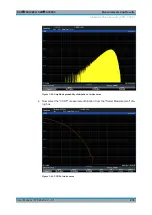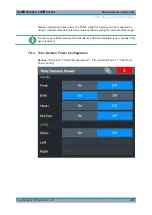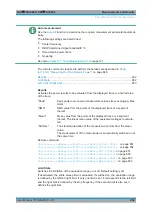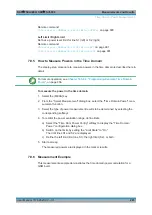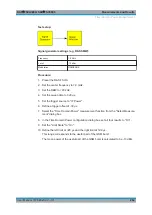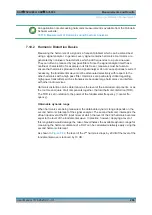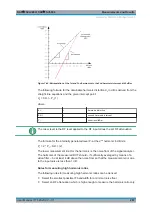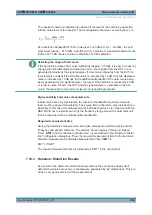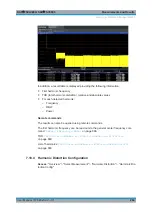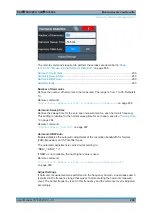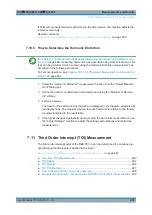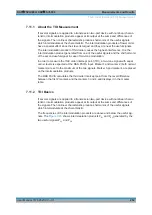
Measurements and Results
R&S
®
FSVA3000/ R&S
®
FSV3000
277
User Manual 1178.8520.02 ─ 01
7.8.7.2
Measurement Example – Measuring the APD and CCDF of White Noise Gener-
ated by the R&S
FSV/A
Setting the analysis bandwidth
When the amplitude distribution is measured, the analysis bandwidth must be set so
that the complete spectrum of the signal to be measured falls within the bandwidth.
This is the only way of ensuring that all the amplitudes will pass through the IF filter
without being distorted. If the selected bandwidth is too small for a digitally modulated
signal, the amplitude distribution at the output of the IF filter becomes a Gaussian dis-
tribution according to the central limit theorem and thus corresponds to a white noise
signal. The true amplitude distribution of the signal therefore cannot be determined.
A programming example demonstrating a statistics measurement in a remote environ-
ment is provided in
Chapter 14.5.8.7, "Programming Example: Measuring Statistics"
1. Preset the R&S
FSV/A.
2. Set the reference level to
-60
dBm
.
The R&S
FSV/A's intrinsic noise is displayed at the top of the screen.
3. Select the "APD" measurement function from the "Select Measurement" dialog
box.
The R&S
FSV/A sets the frequency span to 0 Hz and measures the amplitude
probability distribution (APD). The number of uncorrelated level measurements
used for the measurement is 100000. The mean power and the peak power are
displayed in dBm. The crest factor (peak power – mean power) is output as well.
Statistical Measurements (APD, CCDF)

